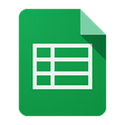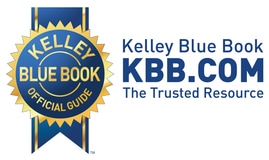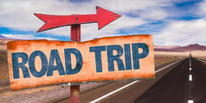5-ETS1-2 Compare Solutions
Generate and compare multiple possible solutions to a problem based on how well each is likely to meet the criteria and constraints of the problem.

Learning Target = I can compare multiple cars and find a solution to a transportation problem.
4 I can teach how to compare multiple cars and find a solution to a transportation problem.
3 Without help, I can compare multiple cars and find a solution to a transportation problem.
2 With a little help, I can compare multiple cars and find a solution to a transportation problem.
1 I need a lot of help comparing multiple cars and finding a solution to a transportation problem.
4 I can teach how to compare multiple cars and find a solution to a transportation problem.
3 Without help, I can compare multiple cars and find a solution to a transportation problem.
2 With a little help, I can compare multiple cars and find a solution to a transportation problem.
1 I need a lot of help comparing multiple cars and finding a solution to a transportation problem.

How much do you want to spend on a car?
Make a chart and find used cars for 6 different price ranges.
Here is a sample layout.
Form discussion circles and describe to your learning partners the meaning of something you learned about comparing cars.
1. Talk about why you think your opinions about comparing cars make sense.
2. Get ideas from others about comparing cars.
You will be successful if....
1. You listen respectfully in your discussion group
2. You can describe the meaning of what you learned about comparing cars.
To earn Kid's Choice,
1. Rephrase the learning target in your own words to a learning partner
2. Explain to a learning partner why today's learning target is important
Make a chart and find used cars for 6 different price ranges.
Here is a sample layout.
Form discussion circles and describe to your learning partners the meaning of something you learned about comparing cars.
1. Talk about why you think your opinions about comparing cars make sense.
2. Get ideas from others about comparing cars.
You will be successful if....
1. You listen respectfully in your discussion group
2. You can describe the meaning of what you learned about comparing cars.
To earn Kid's Choice,
1. Rephrase the learning target in your own words to a learning partner
2. Explain to a learning partner why today's learning target is important

Use Consumer Reports reliability criteria to help you with possible solutions as well as Consumer Reports best and worst used cars.
NOTE: The blue links in the CR reliability criteria will not work for us because we are not subscribers to Consumer Reports,
1. Look at Consumer Reports reliability criteria
What does "reliability" mean when buying a car?
What do the black numbers along the top represent?
How can you tell from the chart which cars/trucks/SUVs are most reliable and which are the least reliable?
Be ready to explain to your learning partners and maybe even the whole class.
2. Find a car that you like. How reliable does the CR chart say it is?
Find a car that you think is one of the most reliable. Tell or show your learning partners why.
Find a car that you think is one of the least reliable. Tell or show your learning partners why.
3. Check out Consumer Reports best and worst used cars. Find the link on "What Goes Wrong as Cars Age".
What is the most frequent trouble with a 9 year old car?
What is the most frequent trouble with a 6 year old car?
What is the most frequent trouble with a 3 year old car?
Be ready to compare your answers with your learning parnters.
4. Use the Consumer Reports reliability criteria to find a reliable used (or certified) car, truck or SUV on Autotrader.
NOTE: The blue links in the CR reliability criteria will not work for us because we are not subscribers to Consumer Reports,
1. Look at Consumer Reports reliability criteria
What does "reliability" mean when buying a car?
What do the black numbers along the top represent?
How can you tell from the chart which cars/trucks/SUVs are most reliable and which are the least reliable?
Be ready to explain to your learning partners and maybe even the whole class.
2. Find a car that you like. How reliable does the CR chart say it is?
Find a car that you think is one of the most reliable. Tell or show your learning partners why.
Find a car that you think is one of the least reliable. Tell or show your learning partners why.
3. Check out Consumer Reports best and worst used cars. Find the link on "What Goes Wrong as Cars Age".
What is the most frequent trouble with a 9 year old car?
What is the most frequent trouble with a 6 year old car?
What is the most frequent trouble with a 3 year old car?
Be ready to compare your answers with your learning parnters.
4. Use the Consumer Reports reliability criteria to find a reliable used (or certified) car, truck or SUV on Autotrader.

Use Kelley Blue Book criteria to compare the asking price for a used car. Is the asking price on Autotrader within the constraints recommended by Kelley Blue Book?
1. Look at Consumer Reports reliability criteria to find a reliable used or certified car/truck/SUV that you like. Make note of the model year, then use the link for the vehicle and scroll down to the model year that matches. Make note of the price ranges.
2. Use Autotrader to find the vehicle. Make note of the asking price, year, make, model and mileage.
3. Use Kelley Blue Book to decide if the asking price is a fair price for you to pay. (Hint: There are 2 different ways on they website you can do this.)
1. Look at Consumer Reports reliability criteria to find a reliable used or certified car/truck/SUV that you like. Make note of the model year, then use the link for the vehicle and scroll down to the model year that matches. Make note of the price ranges.
2. Use Autotrader to find the vehicle. Make note of the asking price, year, make, model and mileage.
3. Use Kelley Blue Book to decide if the asking price is a fair price for you to pay. (Hint: There are 2 different ways on they website you can do this.)

Use Auto Trader, Google Sheets & Maps to calculate fuel costs based on various vehicles and compare for a trip to Orlando Florida.
